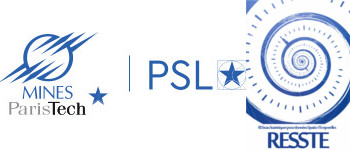The intertwining of socio-spatial complexity with that of price formation leads to challenging
questions in spatial statistics when modeling urban real estate markets and their dynamics. The exact
same apartment typically will not have the same value depending on its location in the city – due to
the specifics of the local neighborhood and other qualitative features. Traditional methods rely on so-
called hedonic prices and implicit markets [1], modified in order to incorporate spatial effects via
geographically weighted regressions (GWR, [2]). However, the availability of large data sets
pertaining to the socio-economic characteristics of cities, at a very fine-grained level, together with the
advent of computational and algorithmic power allows one to capture in much finer detail the complex
relationship between space and price in the real estate market. We present here a two-fold approach.
First, using a Self-Organizing Map algorithm [3] on sets of demographical, economical and
infrastructural data, we bring out socio-spatial structures for a heterogeneous sample of French cities.
We then combine geographical distance and distance on the Self-Organized map into a geo-statistical
estimation model of real estate prices – and we show that this approach out-performs the standard
GWR models.
Second, we introduce an altogether new paradigm, where the city itself is thought of as a network of
locations, that functions as a neural network. Each “neuron” has a value that corresponds to the price
per square meter at the location. Data from past transactions allow us to train this network, so that it
learns the housing market in the city: a neuron is activated upon a transaction occurring at the
corresponding location, leading to a value update for this neuron and for its neighbors in the network.
We apply this paradigm to data from the Paris housing market between 2016 and 2021.
References
[1] S. Rosen, Journal of Political Economy, 82 (1) (1974) 34.
[2] A.S. Fotheringham, C. Brunsdon, M. Chalton, GWR, Wiley & Sons, 2002.
[3] M. Olteanu, A. Hazan, M. Cottrell, J. Randon-Furling, Neur. Comp. & Appl., 31 (2019) 1.

 PDF version
PDF version
